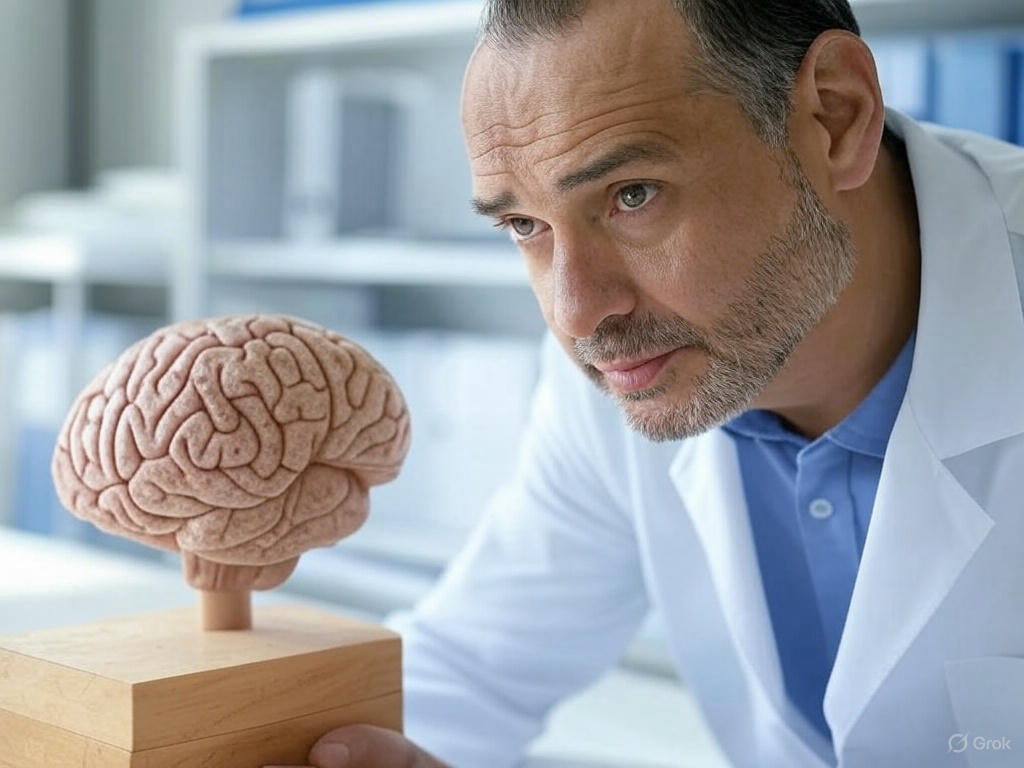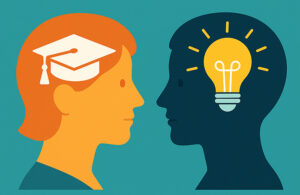Unlocking the Mind: The Fascinating World of Neuroscience
Introduction: The Frontier of Understanding Ourselves
The human brain—a three-pound universe of approximately 86 billion neurons—remains one of the most complex and fascinating structures in existence. Despite centuries of study, we’ve only begun to understand how this remarkable organ creates our thoughts, emotions, memories, and consciousness itself. Neuroscience stands at this frontier, working to decode the intricate processes that make us who we are.
Neuroscience is more than just the study of the brain; it’s an interdisciplinary endeavor that brings together biology, psychology, physics, chemistry, mathematics, computer science, and philosophy to understand the nervous system in its entirety. From investigating individual neurons to mapping whole-brain activity to examining how neurological systems interact with our environment, neuroscience encompasses a vast territory of inquiry.
The implications of this research extend far beyond academic interest. Advances in neuroscience have the potential to transform our understanding of mental health disorders, revolutionize artificial intelligence, enhance human cognitive abilities, and even reshape our concepts of consciousness and free will. As we unlock the secrets of the brain, we simultaneously unlock new possibilities for human flourishing and technological advancement.
This guide explores the fundamentals of neuroscience, its major branches and applications, groundbreaking areas of research, and the exciting future that lies ahead in this rapidly evolving field.
The Foundations: Understanding the Nervous System
The Basic Building Blocks: Neurons and Glia
At the heart of neuroscience lies the neuron—the specialized cell that forms the basic functional unit of the nervous system. Unlike most cells in your body, neurons have a unique ability to transmit electrical signals rapidly over long distances and pass these signals to other cells.
The Structure of Neurons
A typical neuron consists of:
- Cell Body (Soma): Contains the nucleus and maintains the cell’s basic functions
- Dendrites: Branch-like extensions that receive signals from other neurons
- Axon: A long, slender projection that conducts electrical impulses away from the cell body
- Myelin Sheath: A fatty insulating layer that speeds up signal transmission (present on many, but not all, axons)
- Axon Terminals: The ends of axons that release neurotransmitters to communicate with other cells
This structure allows neurons to form complex networks. Think of neurons like trees in a forest, with their branches (dendrites) interweaving and their roots (axons) extending to connect with distant trees. Just as trees communicate through an underground network of fungi, neurons communicate through specialized connections called synapses.
Glial Cells: The Unsung Heroes
While neurons tend to get most of the attention, they make up only about 10% of the cells in the brain. The other 90% are glial cells (or neuroglia), which play crucial supportive roles:
- Astrocytes: Star-shaped cells that regulate the chemical environment around neurons, help form the blood-brain barrier, and may participate in signaling
- Oligodendrocytes (in the central nervous system) and Schwann cells (in the peripheral nervous system): Produce myelin, the insulating sheath around axons
- Microglia: Act as the immune defense in the central nervous system, cleaning up debris and dead neurons
Once dismissed as mere “brain glue” (the word “glia” comes from the Greek for “glue”), these cells are now recognized as essential partners in brain function and development.
Neural Communication: The Language of the Brain
How do neurons talk to each other? The process involves both electrical and chemical signals in a fascinating dance of precision timing and spatial coordination.
The Action Potential: Electricity in Motion
Neurons maintain an electrical charge difference across their cell membranes, with the inside more negative than the outside. When a neuron receives enough stimulation, this difference collapses briefly in a wave that travels along the axon—an action potential. This is the basic unit of neural communication, a binary all-or-nothing electrical impulse.
Action potentials work somewhat like a row of dominoes falling. Once triggered, they propagate at fixed strength regardless of the original stimulus strength. What varies is the frequency of these signals, not their amplitude—the brain’s version of Morse code.
Synaptic Transmission: Chemical Messengers
When an action potential reaches the end of an axon, it typically cannot jump directly to the next neuron. Instead, the electrical signal triggers the release of chemical messengers called neurotransmitters into the tiny gap (synapse) between neurons.
These neurotransmitters cross the synaptic cleft and bind to receptors on the receiving neuron, which may either excite it (make it more likely to fire its own action potential) or inhibit it (make it less likely to fire). The balance of these excitatory and inhibitory signals determines whether a neuron fires.
Common neurotransmitters include:
- Glutamate: The main excitatory neurotransmitter in the brain
- GABA (gamma-aminobutyric acid): The main inhibitory neurotransmitter
- Dopamine: Involved in reward, motivation, and motor control
- Serotonin: Regulates mood, appetite, and sleep
- Acetylcholine: Important for attention, arousal, and memory
- Norepinephrine: Involved in alertness and the fight-or-flight response
The diversity of neurotransmitters and their receptors creates a rich chemical language that allows for nuanced signaling between neurons.
Brain Organization: From Neurons to Networks
Individual neurons form circuits, circuits form regions, and regions form systems—creating a hierarchy of organization in the brain. Understanding this organization is crucial for connecting neural activity to behavior and cognition.
Major Brain Divisions
At the broadest level, the nervous system is divided into:
- Central Nervous System (CNS): Brain and spinal cord
- Peripheral Nervous System (PNS): Nerves connecting the CNS to the rest of the body
The brain itself contains several major divisions:
- Cerebrum: The largest part, divided into two hemispheres and four lobes (frontal, parietal, temporal, and occipital), responsible for higher functions like thinking, perception, and voluntary movement
- Cerebellum: Located at the back of the brain, coordinates movement and balance
- Brainstem: Connects the brain to the spinal cord, controls basic functions like breathing and heart rate
- Limbic System: A set of structures including the amygdala, hippocampus, and hypothalamus, involved in emotion, memory, and basic drives
From Microscopic to Macroscopic
Neuroscience operates at multiple scales:
- Microscopic: Studying individual neurons and synapses
- Mesoscopic: Examining neural circuits and local networks
- Macroscopic: Investigating whole brain regions and systems
Modern neuroscience recognizes that understanding the brain requires integrating knowledge across these scales. A comprehensive theory of brain function must explain how molecular events at synapses lead to the emergence of complex behaviors and thoughts.
Functional Specialization vs. Integration
While certain brain regions are specialized for particular functions (like the visual cortex for sight or Broca’s area for speech production), the brain operates as an integrated system. Most complex functions involve networks distributed across multiple regions working in coordination.
For example, something as seemingly simple as recognizing a friend’s face engages a network of brain regions including:
- The occipital lobe for basic visual processing
- The fusiform face area for face recognition
- The temporal lobe for accessing memories associated with the person
- Emotional centers like the amygdala for your affective response
- And many more regions working together seamlessly
Major Branches of Neuroscience
As neuroscience has evolved, it has diversified into specialized branches that approach the nervous system from different angles:
Cellular and Molecular Neuroscience
Focusing on the smallest scales, this branch examines how neurons develop, how they’re structured, and how they function at the molecular level. Research in this area investigates:
- Gene expression in neurons
- Protein synthesis and transport
- Ion channel function
- Neurotransmitter production and recycling
- Molecular mechanisms of synaptic plasticity (how synapses change)
Techniques like patch-clamp recording (which measures electrical activity in individual neurons) and genetic manipulation have revolutionized our understanding of the molecular machinery that powers neural function.
Systems Neuroscience
This branch examines how neural circuits and networks process information and generate behavior. It asks questions like:
- How do populations of neurons encode sensory information?
- What neural circuits control specific behaviors like walking or eating?
- How do different brain systems interact to create complex functions?
Systems neuroscience often uses techniques like electrophysiology (recording the electrical activity of neurons), optogenetics (using light to control genetically modified neurons), and calcium imaging (visualizing neural activity with fluorescent indicators).
Cognitive Neuroscience
Bridging neuroscience and psychology, cognitive neuroscience explores the neural basis of mental processes like attention, memory, language, and decision-making. It investigates questions such as:
- Which brain networks are involved in working memory?
- How does the brain distinguish between relevant and irrelevant information?
- What neural mechanisms underlie language comprehension?
- How does the brain make decisions based on reward and risk?
Cognitive neuroscience relies heavily on neuroimaging techniques like functional magnetic resonance imaging (fMRI), electroencephalography (EEG), and magnetoencephalography (MEG) to observe brain activity during cognitive tasks.
Computational Neuroscience
This branch uses mathematical models and computer simulations to understand neural processes. It aims to:
- Create models that explain how neurons process information
- Simulate neural networks to understand how they learn and adapt
- Develop theoretical frameworks for neural computation
- Bridge the gap between low-level neural activity and high-level cognition
Computational neuroscience has become increasingly important as we gather more complex data about the brain, requiring sophisticated mathematical tools to make sense of it.
Clinical Neuroscience
Focusing on nervous system disorders and their treatment, clinical neuroscience encompasses neurology, psychiatry, and related medical fields. It studies:
- Neurological disorders like epilepsy, Parkinson’s disease, and multiple sclerosis
- Psychiatric conditions like schizophrenia, depression, and anxiety disorders
- Traumatic brain and spinal cord injuries
- Developmental disorders like autism spectrum disorder
- Neurodegenerative diseases like Alzheimer’s and Huntington’s
Clinical neuroscience translates basic research findings into diagnostic tools and treatments to improve patient care.
Developmental Neuroscience
This branch examines how the nervous system forms, matures, and changes throughout life, investigating:
- How neurons are generated and find their proper locations
- How neural circuits form during embryonic development
- Critical periods when the brain is especially plastic and sensitive to experience
- Age-related changes in brain structure and function
Developmental neuroscience provides insights into both normal brain development and neurodevelopmental disorders.
Social Neuroscience
A relatively new branch, social neuroscience explores the neural basis of social behavior and interaction:
- How the brain processes social cues like facial expressions
- Neural mechanisms of empathy and understanding others’ mental states
- Brain systems involved in cooperation, competition, and moral reasoning
- The effects of social environment on brain development and function
This field highlights how deeply social our brains are, with specialized systems dedicated to navigating the social world.
Why Neuroscience Matters: Applications and Implications
Neuroscience research has far-reaching implications that extend well beyond the laboratory. Let’s explore some of the most significant ways neuroscience impacts our world:
Advancing Mental Health Understanding and Treatment
Mental health disorders affect nearly one billion people worldwide, according to the World Health Organization. Neuroscience is transforming our approach to these conditions in several ways:
Redefining Disorders Based on Underlying Neurobiology
Traditionally, psychiatric disorders have been defined by their symptoms. Neuroscience is shifting this paradigm by identifying the underlying neural mechanisms. For example:
- Research has revealed differences in brain network connectivity in depression
- Studies show altered dopamine signaling in schizophrenia
- Anxiety disorders involve hyperactivity in the amygdala and related fear circuits
This biological understanding helps destigmatize mental health conditions by showing they involve measurable brain differences, not personal weaknesses.
Developing Targeted Treatments
As we better understand the neurobiology of mental health disorders, we can develop more precise treatments:
- New rapid-acting antidepressants like ketamine that work through glutamate signaling, rather than the traditional serotonin pathway
- Transcranial magnetic stimulation (TMS) that targets specific brain circuits implicated in depression
- Psychedelic-assisted therapies that may promote neural plasticity to help “rewire” problematic brain patterns
Early Detection and Prevention
Neuroscience is beginning to identify biomarkers that may help detect mental health conditions before symptoms become severe:
- Brain imaging patterns that predict vulnerability to PTSD after trauma
- Cognitive and attentional markers that may indicate risk for developing schizophrenia
- Sleep abnormalities that precede mood disorders
Early detection opens the possibility of preventive interventions, potentially changing the trajectory of these conditions.
Inspiring and Improving Artificial Intelligence
The brain remains the most sophisticated information processing system we know, far surpassing computers in energy efficiency, adaptability, and learning from limited examples. Neuroscience has profoundly influenced AI development:
Neural Networks and Deep Learning
Artificial neural networks—the basis of modern AI—were inspired by the brain’s architecture. While highly simplified, these mathematical models capture some key properties of neural information processing:
- Distributed representation of information across many units
- Parallel processing of data
- Learning through adjustment of connection strengths
Deep learning systems have achieved remarkable results in image recognition, language processing, and other domains by scaling up these brain-inspired architectures.
Neuromorphic Computing
More directly mimicking brain structure, neuromorphic computing aims to build hardware that processes information more like the brain:
- Using spiking neurons that communicate through discrete pulses rather than continuous values
- Integrating memory and processing (unlike conventional computers that separate them)
- Achieving greater energy efficiency and real-time processing capability
Projects like IBM’s TrueNorth, Intel’s Loihi, and the European Human Brain Project’s neuromorphic platforms are developing chips with millions of electronic “neurons.”
Brain-Computer Interfaces
These systems create direct communication pathways between the brain and external devices:
- Invasive BCIs like those developed by companies such as Neuralink implant electrodes directly into brain tissue
- Non-invasive BCIs use technologies like EEG to detect brain activity from outside the skull
- Applications range from helping paralyzed patients control robotic limbs to potential enhancement of human cognition
As our understanding of neural coding improves, these interfaces will become more sophisticated and capable.
Enhancing Cognitive Function and Learning
Neuroscience insights are changing how we approach education, cognitive enhancement, and rehabilitation:
Evidence-Based Educational Practices
Research on learning and memory is informing educational methods:
- Spaced repetition techniques leverage findings about how memory consolidation works
- Active retrieval practice (testing yourself) strengthens memory more effectively than passive review
- Multimodal learning engages multiple brain systems, enhancing retention
These approaches, grounded in neuroscience, can make learning more efficient and effective.
Cognitive Training and Enhancement
Understanding neuroplasticity—the brain’s ability to change—has spurred interest in cognitive training:
- Working memory training programs aim to improve this crucial cognitive capacity
- Attention training might help people with ADHD or other attentional difficulties
- Cognitive reserve can be built through intellectually engaging activities, potentially providing resilience against age-related decline
Neurofeedback and Self-Regulation
These approaches provide real-time information about brain activity to help people regulate their own neural processes:
- EEG neurofeedback shows promise for conditions like ADHD and anxiety
- Real-time fMRI feedback allows people to learn to control activity in specific brain regions
- Wearable devices are bringing simpler forms of neurofeedback into everyday life
Cognitive Rehabilitation
For individuals with brain injuries or neurological conditions, neuroscience-based rehabilitation approaches include:
- Constraint-induced movement therapy for stroke recovery, based on principles of neural plasticity
- Cognitive remediation therapies for conditions like schizophrenia or traumatic brain injury
- Virtual reality environments that provide controlled, engaging rehabilitation contexts
Medical Breakthroughs and Neuroengineering
Neuroscience is enabling remarkable medical innovations:
Neuroprosthetics
These devices substitute for damaged neural systems:
- Cochlear implants convert sound into electrical signals the brain can interpret, restoring hearing
- Retinal implants provide similar functionality for vision
- Neural implants for Parkinson’s disease deliver deep brain stimulation to control movement symptoms
- Brain-controlled prosthetic limbs allow amputees to move artificial limbs with their thoughts
Precision Medicine for Neurological Disorders
Individual differences in brain structure, function, and genetics affect how people respond to treatments. Neuroscience is enabling more personalized approaches:
- Genetic profiling helps predict which epilepsy medications will work best for specific patients
- Brain imaging biomarkers can indicate which depression treatments are most likely to succeed
- Pharmacogenomics identifies how individuals might metabolize neurological medications differently
Novel Therapeutics
Understanding neural mechanisms enables entirely new treatment approaches:
- Optogenetics allows precise control of neural activity using light (currently in animal research)
- Gene therapy can address genetic neurological disorders by delivering corrected genes to brain cells
- Exosomes and other nanoparticles can deliver drugs across the blood-brain barrier
- Stem cell therapies might replace damaged neurons in conditions like spinal cord injury
Understanding the Mind-Body Connection
Neuroscience is elucidating the biological mechanisms behind the profound connections between mental and physical health:
Psychoneuroimmunology
This field explores how the nervous system and immune system interact:
- Stress activates neural pathways that affect immune function
- Immune cells produce signaling molecules that influence brain activity
- Inflammation may contribute to depression and other psychiatric conditions
These findings explain how psychological states can affect physical health and vice versa.
Neurovisceral Integration
The brain has bidirectional connections with organ systems throughout the body:
- The vagus nerve connects the brain to many internal organs, affecting and being affected by their function
- Heart rate variability reflects the balance between sympathetic and parasympathetic nervous system activity
- Gut-brain communication involves multiple pathways, with intestinal flora potentially influencing mood and cognition
Placebo Effects and Mind-Body Healing
Neuroscience is revealing the mechanisms behind placebo effects:
- Expectation of pain relief activates endogenous opioid systems in the brain
- Placebo treatments can trigger real physiological responses, not just reporting biases
- The therapeutic relationship engages social brain circuits that can enhance healing
These insights provide a scientific basis for understanding how mental processes influence physical health.
Groundbreaking Areas in Neuroscience
Neuroscience is advancing rapidly on multiple frontiers. Let’s explore some of the most exciting areas of current research:
Neuroplasticity: The Adaptable Brain
One of neuroscience’s most transformative discoveries is that the brain remains changeable throughout life, contrary to earlier beliefs that it becomes fixed after early development.
Types of Neuroplasticity
Neuroplasticity takes several forms:
- Structural plasticity: Physical changes in brain structure, including the growth of new neurons (neurogenesis) and formation of new connections
- Functional plasticity: Changes in how existing neural systems operate, such as strengthening or weakening of synaptic connections
- Network plasticity: Reorganization of which brain regions work together during particular tasks
Mechanisms of Plasticity
At the cellular level, plasticity involves:
- Hebbian plasticity: Synapses strengthen when neurons fire together (“neurons that fire together, wire together”)
- Homeostatic plasticity: Compensatory mechanisms that keep neural activity within a functional range
- Structural remodeling: Growth of new dendritic spines, axonal branches, and even entire neurons
Plasticity Across the Lifespan
While the brain is most plastic during early development, significant plasticity continues throughout life:
- Critical periods: Times of heightened plasticity when experience strongly shapes neural circuits (e.g., visual system development in early childhood)
- Adult plasticity: Continues throughout life, though often requiring more intense or prolonged stimulation
- Recovery after injury: The brain can reorganize to compensate for damage, though with limitations
Harnessing Plasticity
Understanding plasticity has profound implications:
- Rehabilitation approaches: Evidence-based methods to promote recovery after stroke or brain injury
- Learning optimization: Techniques to enhance skill acquisition by leveraging plasticity mechanisms
- Interventions for developmental disorders: Therapies that take advantage of critical periods or extend them
Research continues to uncover factors that enhance or inhibit plasticity, from molecular signals to behavioral interventions, offering hope for conditions once considered untreatable.
Neurotechnology: Tools to Observe and Influence the Brain
Advances in technology are revolutionizing our ability to study and interact with the brain.
Brain Imaging and Recording Technologies
- Functional MRI (fMRI): Measures blood flow changes related to neural activity, allowing visualization of which brain regions are active during tasks
- Diffusion tensor imaging (DTI): Maps white matter tracts, revealing connectivity between brain regions
- Magnetoencephalography (MEG) and Electroencephalography (EEG): Record electrical/magnetic activity of the brain with high temporal resolution
- Functional near-infrared spectroscopy (fNIRS): Measures blood oxygenation changes using light, offering a portable alternative to fMRI
- Two-photon microscopy: Allows visualization of individual neurons in living tissue
- Voltage-sensitive dyes and calcium imaging: Enable visualization of activity in many neurons simultaneously
Tools for Manipulating Neural Activity
- Transcranial magnetic stimulation (TMS): Uses magnetic fields to non-invasively modulate brain activity
- Transcranial direct current stimulation (tDCS): Applies weak electrical currents to influence neural excitability
- Deep brain stimulation (DBS): Implanted electrodes deliver electrical stimulation to specific brain regions
- Optogenetics: Uses light to control neurons that have been genetically modified to express light-sensitive proteins
- Chemogenetics: Similar to optogenetics but uses designer drugs instead of light to control genetically modified neurons
Brain-Computer Interfaces (BCIs)
These systems translate brain activity into commands for external devices:
- Invasive BCIs: Electrodes implanted in or on the brain provide high-fidelity signals but require surgery
- Non-invasive BCIs: Use technologies like EEG from outside the skull, offering lower signal quality but no surgical risks
- Applications: Range from helping paralyzed individuals communicate to potential enhancement of human capabilities
High-throughput Techniques
Modern neuroscience increasingly uses methods that generate massive datasets:
- Single-cell RNA sequencing: Identifies gene expression patterns in individual neurons
- Connectomics: Maps all connections between neurons in a circuit or brain region
- Large-scale electrophysiology: Records from hundreds or thousands of neurons simultaneously
These technologies, combined with advanced computational methods, are generating unprecedented insights into brain structure and function.
Consciousness Studies: The Hard Problem
Perhaps the most profound question in neuroscience is how physical brain processes give rise to subjective experience—what philosophers call “the hard problem of consciousness.”
Neural Correlates of Consciousness
Research seeks to identify which brain patterns correspond to conscious experience:
- Global workspace theory: Suggests consciousness arises when information is broadcast widely across the brain
- Integrated information theory: Proposes consciousness emerges from complex, integrated information processing
- Higher-order theories: Posit that consciousness involves higher-level representations of lower-level brain states
Studies of altered states of consciousness provide valuable insights:
- Comparing brain activity during sleep, anesthesia, and wakefulness
- Investigating psychedelic experiences and their neural bases
- Studying disorders of consciousness like coma and minimally conscious states
Measuring Consciousness
Developing objective markers of consciousness is challenging but crucial:
- The perturbational complexity index measures the brain’s response to TMS pulses
- Spectral patterns in EEG signals correlate with levels of consciousness
- Functional connectivity patterns differ between conscious and unconscious states
Clinical Applications
This research has important clinical implications:
- Improved methods for assessing consciousness in non-communicative patients
- Refined anesthetic protocols for surgery
- Potential treatments for disorders of consciousness
While we may never fully solve the hard problem, neuroscience is making progress in understanding the neural basis of conscious experience.
The Mind-Body Connection: How Thoughts Affect Physical Health
The historical separation between “mental” and “physical” health is increasingly recognized as artificial. Neuroscience is elucidating the biological mechanisms behind mind-body interactions.
Stress and Health
Chronic stress affects multiple bodily systems:
- The hypothalamic-pituitary-adrenal (HPA) axis releases cortisol, which can disrupt immune function when chronically elevated
- Sympathetic nervous system activation increases inflammation markers
- Stress accelerates cellular aging through effects on telomeres (chromosome end-caps)
These mechanisms help explain how psychological stress contributes to physical health problems like cardiovascular disease, diabetes, and accelerated aging.
Meditation and Brain Changes
Scientific studies of meditation and mindfulness practices reveal tangible brain effects:
- Increased gray matter density in regions involved in attention and emotional regulation
- Enhanced connectivity in networks related to self-awareness and compassion
- Reduced activity in the default mode network associated with mind-wandering and rumination
- Changed expression of genes involved in inflammation and stress response
These findings provide a neurobiological basis for the well-documented health benefits of meditation.
Emotion Regulation and Physical Health
How we manage emotions affects our bodies:
- Suppressing emotions increases sympathetic nervous system activity and cardiovascular stress
- Cognitive reappraisal strategies can reduce physiological stress responses
- Emotional awareness is associated with better immune function and health outcomes
The Social Brain and Health
Social connections profoundly influence health through neural pathways:
- Social support buffers stress responses at the neural level
- Social isolation activates similar brain regions as physical pain
- Positive social interactions trigger reward circuits and reduce stress hormones
These findings help explain why social connectedness is one of the strongest predictors of health and longevity.
The Future of Neuroscience: Where We’re Headed
As neuroscience continues to evolve, several exciting frontiers promise to transform our understanding of the brain and its capabilities.
AI-Powered Brain Research
Artificial intelligence is accelerating neuroscience in multiple ways:
Analyzing Complex Data
- Machine learning algorithms can identify patterns in neural data too subtle for human detection
- AI helps interpret the vast datasets generated by modern recording techniques
- Computer vision automates the analysis of brain images and cellular structures
Generating and Testing Hypotheses
- AI systems can suggest hypotheses based on existing literature and data
- Computational models simulate neural systems to predict outcomes of experimental manipulations
- Virtual brain simulations allow testing ideas that would be impractical in real brains
Personalized Neuroscience
- AI can identify individual differences in brain structure and function
- Algorithms predict how individuals might respond to treatments based on their brain characteristics
- Customized interventions can be developed for specific neural profiles
The synergistic relationship between AI and neuroscience is likely to accelerate discovery in both fields.
Neurostimulation and Neural Engineering
Technologies to influence brain activity are becoming more sophisticated and targeted:
Precision Neuromodulation
- Next-generation brain stimulation can target specific cell types or circuits
- Closed-loop systems adjust stimulation based on real-time neural activity
- Minimally invasive approaches reduce risks while maintaining efficacy
Neural Prosthetics and Augmentation
- Brain-controlled robotic limbs with sensory feedback
- Vision and hearing restoration through increasingly sophisticated neural interfaces
- Memory prosthetics that help encode or retrieve information
- Cognitive enhancement through targeted stimulation of learning and attention networks
Biological-Electronic Hybrids
- “Living electrodes” made of neural tissue
- Nano-scale neural interfaces that minimize tissue damage
- Brain-inspired computing systems that integrate with biological neurons
These developments are blurring the line between natural and engineered neural systems.
Precision Medicine for Brain Disorders
Neuroscience is moving toward more personalized approaches to brain and mental health:
Biomarker-Based Diagnosis and Treatment
- Brain imaging patterns that indicate specific subtypes of conditions like depression
- Genetic profiles that predict medication response
- EEG signatures that guide treatment selection
Gene and Cell Therapies
- CRISPR and other gene editing techniques to correct genetic neurological disorders
- Stem cell treatments to replace damaged neurons or support cells
- RNA-based therapies that adjust gene expression patterns
Circuit-Specific Interventions
- Targeting specific neural circuits involved in particular symptoms
- Combining brain mapping with precise interventions
- Customizing treatment based on individual circuit abnormalities
These approaches promise more effective treatments with fewer side effects than current options.
Ethical Considerations and Neuroethics
As neuroscience capabilities advance, important ethical questions arise:
Neural Privacy and Cognitive Liberty
- Who should have access to information about our brain activity?
- Should there be a right to mental privacy?
- Do individuals have the right to control inputs to their own brains?
Enhancement Ethics
- What distinguishes treatment from enhancement?
- Could cognitive enhancement increase social inequality?
- How should we balance benefits and risks of neural modification?
Neuroscience and Law
- How should neuroscience evidence be used in legal proceedings?
- Does better understanding of the neural basis of behavior change concepts of responsibility?
- Should neurotechnology be regulated differently from other technologies?
Identity and Personhood
- How do neural interventions that affect personality, memory, or preferences relate to personal identity?
- What are the implications of neuroscience for concepts of free will and agency?
- How should we think about consciousness in artificial systems?
The field of neuroethics addresses these questions, working to ensure that neuroscience advances in ways that respect human values and rights.
Conclusion: The Continuing Journey of Discovery
Neuroscience stands at a fascinating juncture—we’ve learned more about the brain in the past few decades than in all previous human history, yet we’re still just beginning to understand this remarkable organ. The questions that remain are among the most profound in science: How does the brain create consciousness? What makes each mind unique? How can we best protect and enhance our cognitive capabilities?
As research continues, the implications extend far beyond the laboratory. Advances in neuroscience are transforming medicine, technology, education, and even our conception of ourselves. By understanding the brain better, we gain insight into what makes us human and how we can improve the human condition.
Whether you’re a student, a professional, or simply curious about the mind, engaging with neuroscience offers a window into one of science’s greatest frontiers. The journey of discovery continues, with each finding opening new questions and possibilities. The future of neuroscience promises not only to deepen our knowledge but also to expand our capacity to heal, create, and flourish.









